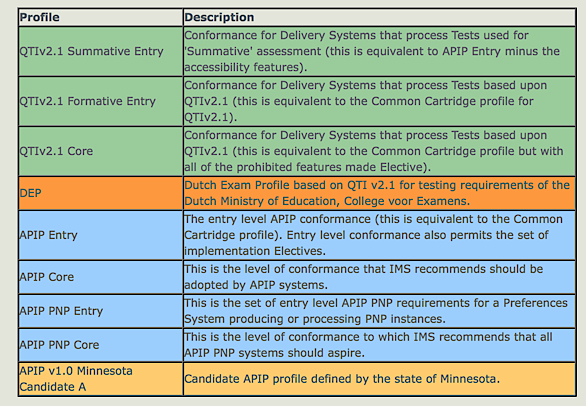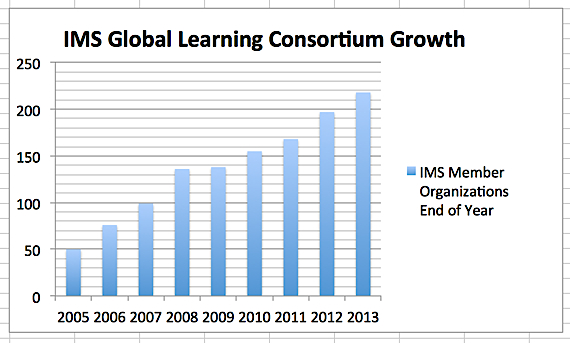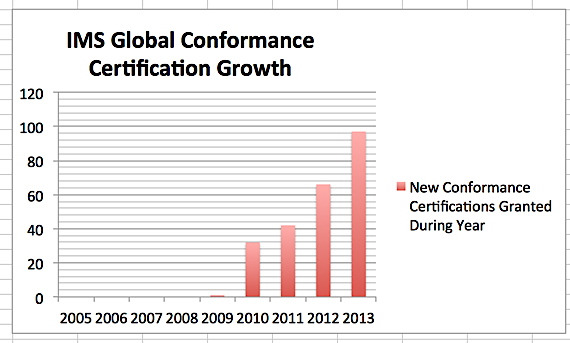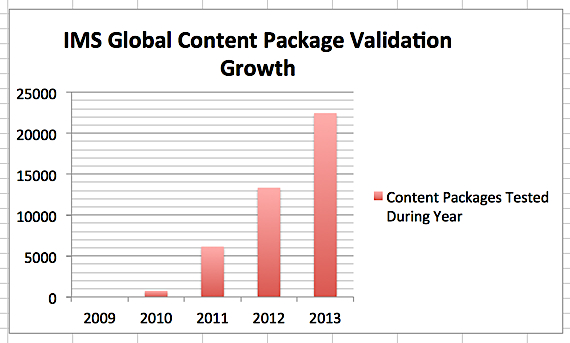Not more than a couple of weeks after my blog post on Gates’ Foundation LRMI and its motivating program InBloom it was announced that InBloom will be “winding down.”
InBloom strictly speaking is a non-profit corporation set up by the Gates Foundation to provide open source software to implement a data collection system at the state level capable of collecting and analyzing data from (what was hoped to be) numerous educational applications at the district level providing information on student progress. Before the InBloom non-profit was “spun out” the work was incubated under the auspices of the Gates Foundation via a project called first the Shared Learning Initiative (SLI) and later the Shared Learning Collaborative (SLC).
We use the term “InBloom” here to represent the entire sequence of work from inception that led to InBloom inclusive, not just the non-profit corporation work.
The stated reason for the wind down of InBloom has focused on one potential adopter – the state of New York – where InBloom has been highly criticized because of potential data privacy issues.
However, I think we need to remember that InBloom was highly touted by the venerable CCSSO (Chief Council of State School Officers) – representing virtually all the U.S. states, funded by the Gates Foundation to the tune of $100-200 million (starting from the initial Shared Learning Infrastructure / Collaborative) and endorsed by at least a half dozen states at the formation of InBloom (with the hope that many, many states would adopt), not to mention support from major industry consortia like SIIA.
The reality is that the SLI/SLC/InBloom ended up being rejected by a much larger body of potential participants than the state of New York. Therefore, focusing on New York alone and the single issue of data privacy doesn’t fully capture the key lessons that many of us already knew and must now solidify based on the InBloom experience. After all, education is about learning and if we can’t learn from our experiences then it speaks volumes about our education. From the perspective of 1EdTech there were numerous fundamental mistakes made in the planning and execution of InBloom. Here are some of the key ones:
- Spending a lot of money to reinvent the wheel usually doesn’t make much sense. While better use of data in education is a good thing there was not anything that was a breakthrough technically speaking from InBloom. Many, many suppliers could have provided the InBloom capability (which was basically a data warehouse). It appears that Gates decided to pick one favored contractor because they were impatient and/or not wanting to work with existing industry providers. In addition, pretty much every aspect of InBloom was already covered in existing education sector interoperability standards – and this was completely ignored.
- You can have a lot of people around the table, but if they aren’t the right people the net result will probably be wrong. It certainly seems like Gates decided to focus on the states/CCSSO because of the power position they had in terms of adopting the Common Core standards. The problem is that state government is generally not where the “rubber hits the road” in terms of student learning. Yes, there are many caring administrators at the state level who want to do the right thing, but it’s in the schools and the school districts where better learning and teaching needs to occur. It doesn’t take much experience engaging with the K-12 sector to understand that there is a huge divide in most states between the states and the districts. To the districts the idea of sending data to the state and expecting something good to happen is a very big stretch of the imagination. The people that are the good teachers are too busy helping students learn to get involved in pie in the sky projects.
- "Small" (read:) actionable data is much more important than big data in education. Readers of this blog have already read what 1EdTech has learned from engaging with the education sector today and a general understanding of where we are in the evolution of education systems historically speaking. The future of education is not about big or massive. The future of education is about diversity and distinctiveness. The future is about using data to help individual students by putting it in the hands of someone that cares (the student, the parent, the mentor, the teacher).
- Working with the education sector is likely to produce a better result than trying to end-run it. InBloom was an attempt to end-run districts, existing suppliers, and, yes, existing standards organizations like 1EdTech. To be honest, most we have talked to perceive InBloom as a Microsoft style (or any dominant vendor) platform play (no offense meant here to Mr. Gates as we would doubt he had anything to do with the strategy). It goes like this: We will give you the platform and then dominate the market. The problem with going it alone is that existing collaborations in the education sector that are worth their salt (we like to think that 1EdTech is one of them) provide a huge base of historical knowledge as well as existing base of collaboration that helps guide things in the right direction while actually getting there faster and cheaper.
- Open source is not open standards – and to build collaboration it is open standards that work best. Lot’s of folks have been reiterating this for a long time now. It’s so very simple really. With open source you have code that includes things like APIs. But those APIs are evolved by a single controlling entity and not governed by a community. Thus, the controlling entity drives it. This is why the world has numerous standards organizations of all shapes and sizes. Open standards define standards that any party can use, can be implemented in a variety of APIs/programming languages and that are evolved and governed by a defined and legally bound community process.
We hate to see good money wasted in 1EdTech – as we work very hard for the membership dues we collect. Wasting of $100-200 million is pretty inexcusable in our world. In fact, it’s very sad to think what good that money could have achieved.
Our sincere hope is that leaders in this sector – including those that had a hand in InBloom– do not hide behind red herrings like privacy issues in one state. Leaders in education need to learn from their mistakes and course correct. The InBloom mistakes were numerous and fundamental – and pretty visible right from the start. What about data privacy, wasn’t that a core issue? We don’t see it that way. The data privacy concern was just a symptom – not the root cause.
While 1EdTech never saw InBloom as a direct competitor, the reality is that in the time it took to spend that $100-200 million on InBloom – 1EdTech continues to grow organically and has issued over 280 conformance certifications for interoperable learning platforms, tools, applications and resources – and is now building data collection capability via open standards (Caliper) into all of these. Hmmm . . . kind of sounds like a shared learning collaborative of some kind since there are over 240 collaborating organizations in 1EdTech. Investment required to get here: Less than $10 million spread among 240 members.
Interesting contrast in approaches and results.















